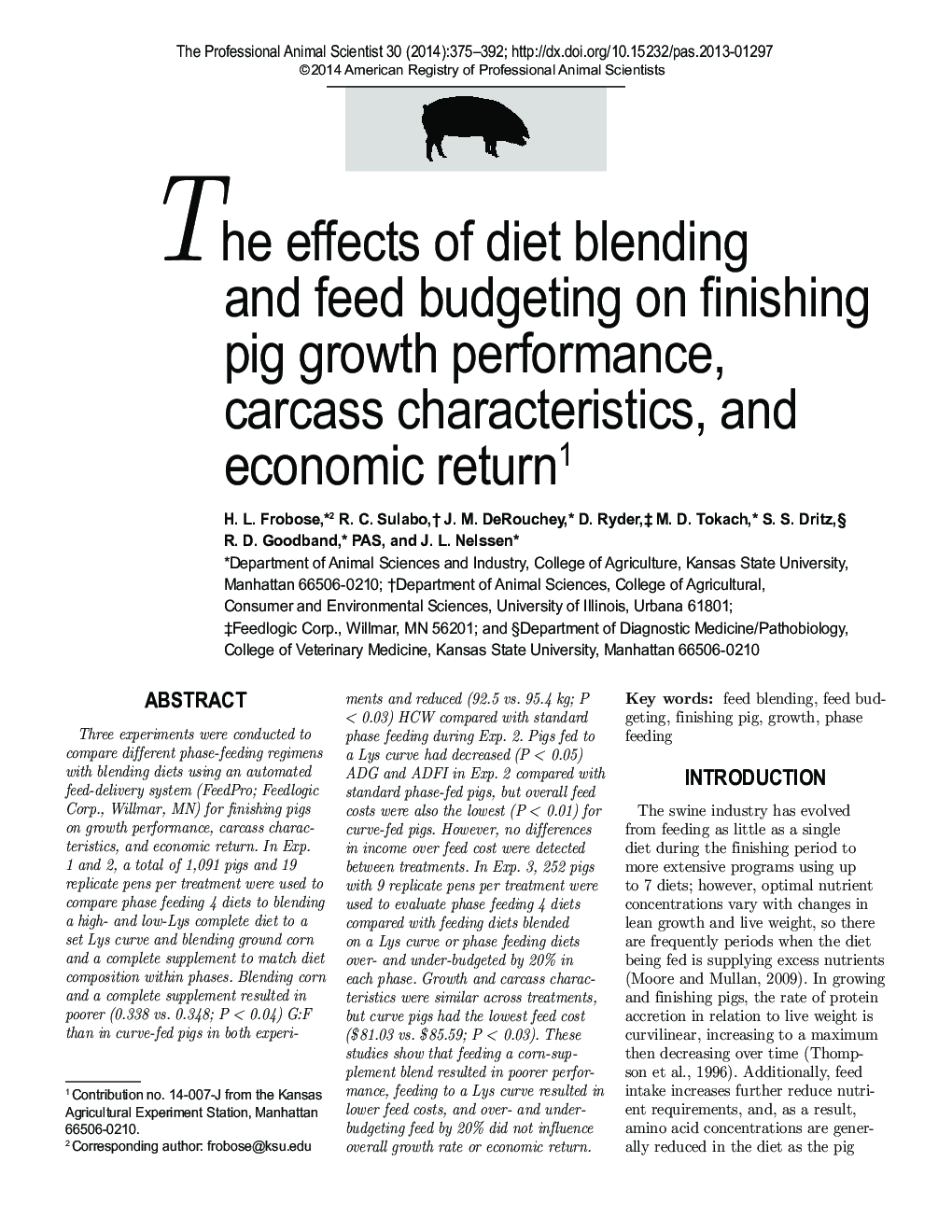| کد مقاله | کد نشریه | سال انتشار | مقاله انگلیسی | نسخه تمام متن |
|---|---|---|---|---|
| 2453860 | 1110355 | 2014 | 18 صفحه PDF | دانلود رایگان |
عنوان انگلیسی مقاله ISI
The effects of diet blending and feed budgeting on finishing pig growth performance, carcass characteristics, and economic return1
ترجمه فارسی عنوان
اثرات ترکیب رژیم غذایی و بودجه بندی غذا بر عملکرد رشد خوک، ویژگی های لاشه و بازده اقتصادی 1
دانلود مقاله + سفارش ترجمه
دانلود مقاله ISI انگلیسی
رایگان برای ایرانیان
کلمات کلیدی
ترکیب غذا، بودجه غذا، خوک پایان دادن رشد، فاز تغذیه،
موضوعات مرتبط
علوم زیستی و بیوفناوری
علوم کشاورزی و بیولوژیک
علوم دامی و جانورشناسی
چکیده انگلیسی
Three experiments were conducted to compare different phase-feeding regimens with blending diets using an automated feed-delivery system (FeedPro; Feedlogic Corp., Willmar, MN) for finishing pigs on growth performance, carcass characteristics, and economic return. In Exp. 1 and 2, a total of 1,091 pigs and 19 replicate pens per treatment were used to compare phase feeding 4 diets to blending a high- and low-Lys complete diet to a set Lys curve and blending ground corn and a complete supplement to match diet composition within phases. Blending corn and a complete supplement resulted in poorer (0.338 vs. 0.348; PÂ <Â 0.04) G:F than in curve-fed pigs in both experiments and reduced (92.5 vs. 95.4Â kg; PÂ <Â 0.03) HCW compared with standard phase feeding during Exp. 2. Pigs fed to a Lys curve had decreased (PÂ <Â 0.05) ADG and ADFI in Exp. 2 compared with standard phase-fed pigs, but overall feed costs were also the lowest (PÂ <Â 0.01) for curve-fed pigs. However, no differences in income over feed cost were detected between treatments. In Exp. 3, 252 pigs with 9 replicate pens per treatment were used to evaluate phase feeding 4 diets compared with feeding diets blended on a Lys curve or phase feeding diets over- and under-budgeted by 20% in each phase. Growth and carcass characteristics were similar across treatments, but curve pigs had the lowest feed cost ($81.03 vs. $85.59; PÂ <Â 0.03). These studies show that feeding a corn-supplement blend resulted in poorer performance, feeding to a Lys curve resulted in lower feed costs, and over- and under-budgeting feed by 20% did not influence overall growth rate or economic return.
ناشر
Database: Elsevier - ScienceDirect (ساینس دایرکت)
Journal: The Professional Animal Scientist - Volume 30, Issue 4, August 2014, Pages 375-392
Journal: The Professional Animal Scientist - Volume 30, Issue 4, August 2014, Pages 375-392
نویسندگان
H.L. Frobose, R.C. Sulabo, J.M. DeRouchey, D. Ryder, M.D. Tokach, S.S. Dritz, R.D. PAS, J.L. Nelssen,
